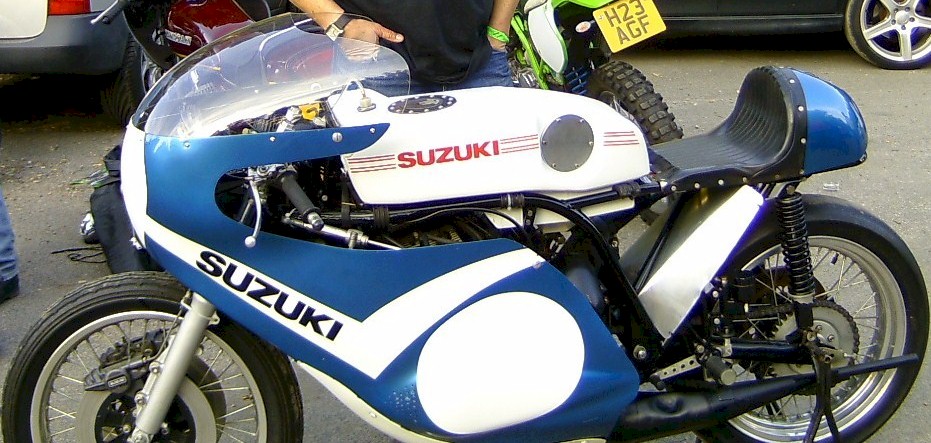
There are probably more TR750 - XR11 race bikes being raced paraded and polished in collections today than were ever built by Suzuki. Some were known to have met their fate with the crusher and others are supposedly buried under the floor of the race shop in Japan.
So where did they all come from? And more to the point, where can I get one at a reasonable price?
Some are obviously real but how many of them did Barry Sheene actually race? Some might have a BS motor or other component,. Others were made by Barton Motors who manufactured dry clutch kits and a range of other parts to transform streetbikes into racers.
Frames were made by Spondon, Harris, Bakker, Dresda, S&L (Sanders and Lewis) to name but a few.
So if you want one it's still possible to create a replica.
Race or Road
The first question a replica builder has to address is what the heck are they going to do with it once they finish pouring hard earned cash into it.
-
Is it supposed to be a a close replica which faithfully uses only parts from the era or exact replicas?
-
Is it to be raced and that means pushing eligibility rules?
-
Is it a street bike and in that case how close does it have to be?
-
Is it to be a Tribute rather than a slavish replica?
It really is a case of working out what the final bike is to look and what its purpose is.
What year
The next question is what year, what model, who supposedly rode it? Are we building the bike that Tepi ran at a particular circuit on a particular date or the one that we saw Barry win a race at some circuit back in the day?
The issue here is that for a true replica we have to remind ourselves that specifications changed almost from circuit to circuit in the quest for wins and championships. That makes it hard to pin down and the more generic we start thinking, the less it's a true replica and the more it becomes a Tribute.
And that's great news for those of us that want to recreate some of the excitement of our past and really could care less which clutch lifter was used on which bike by which riders at which races. Creating something that reminds us of those good old days.
Frame
There were two major frame designs. The first was used in 1973 and the other, known as the lowboy was introduced in 1975. This frame is very similar to a street bike frame and is easiest to fabricate.
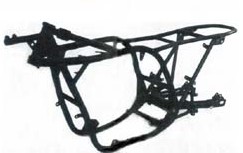 T
T
The later lowboy frame is quite different with sloping top tubes and is markedly different.
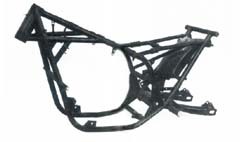
Dennis Curtis in Canada offers a TR750 chassis with forward angled shocks. A very nice piece of kit. I'm not sure which year this represents, but probably a 74 Lowboy. 75's seem a lot more complex around the rear shock mounts.
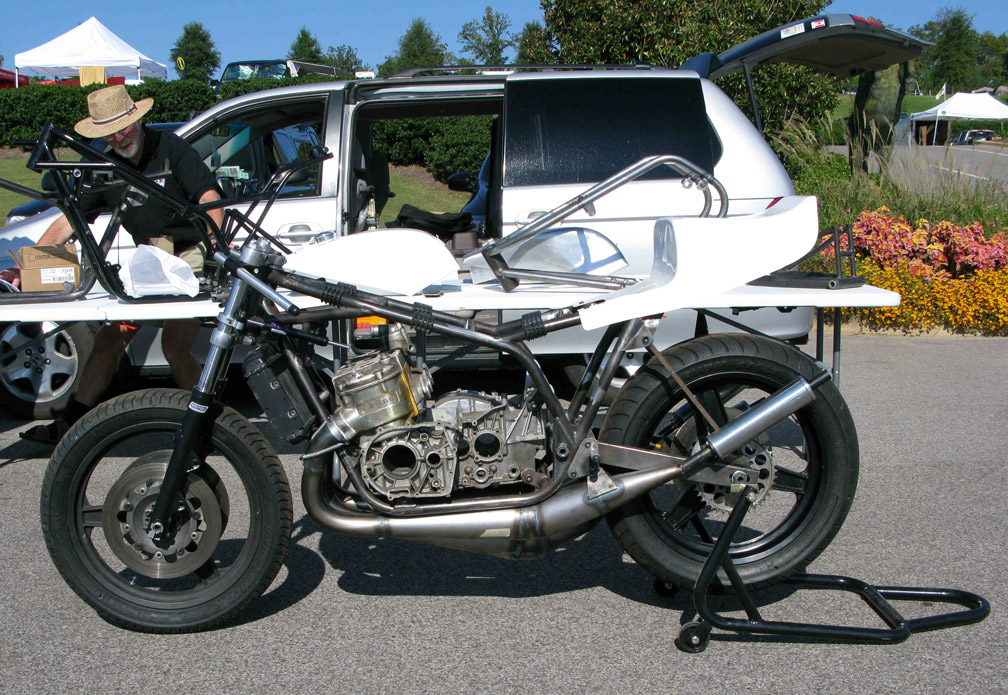
Cor Gerrats of Sam Racing in the Netherlands, decided to build a replica to take racing and he started with a stock street frame. I'm sure it is much heavier than a chrome-moly race frame, but it is probably a lot more cost effective and looks fantastic.
It's easy to see that Cor has removed a lot of plating around the steering head. He's trimmed off al the unwanted brackets and has replaced the upper frame cradle. Don't ry this at home unless you know what you are doing. A poorly welded frame could be the last thing you make!
A stock frame is incredibly heavy but even for a street bike there's a lot of weight that can be removed. Check out the front lower radiator mounts for example. They are incredibly heavy and totally unnecessary. Cor has also removed both rear footpeg mounts and all the boxing which weighs a proverbial ton. Then he added in a diagonal cross brace to provide some rigidity under acceleration.
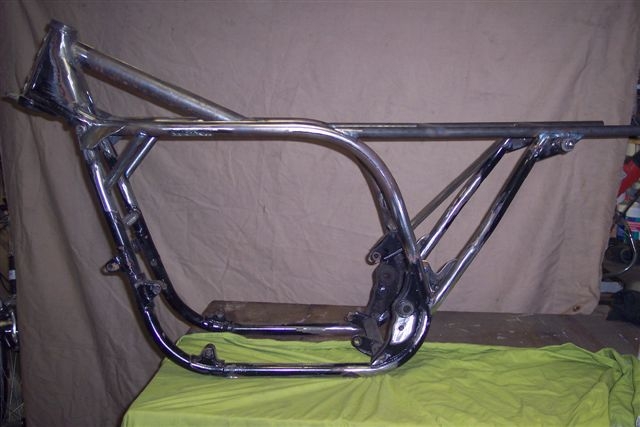

Another approach is to make a cafe racer in the style of a TR750 like the one built by Ron Moolenaars also from the Netherlands. Ron has captured the essence of the TR750 with big tank, race seat and classic Suzuki racing colors.
